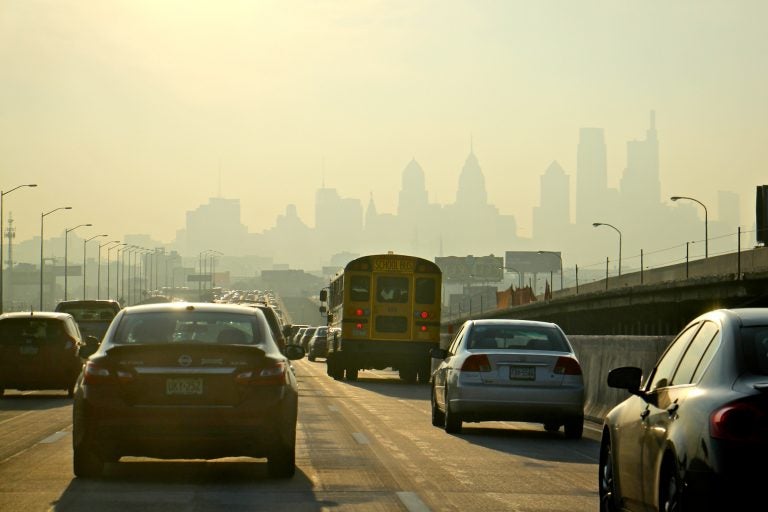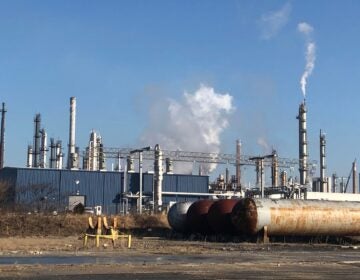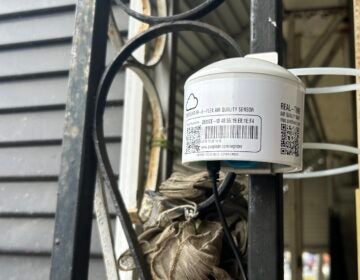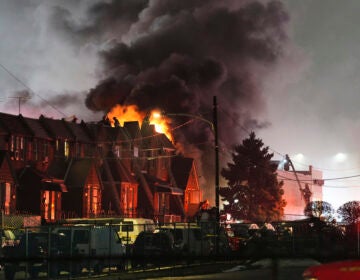New study finds elevated risk of pollution exposure in some of Philly’s hottest neighborhoods
Some of Philadelphia’s most desirable neighborhoods come with a risk of increased exposure to auto-related air pollution.

Traffic on I-95 heads south toward Center City. (Emma Lee/WHYY)
This story originally appeared on PlanPhilly.
—
Some of Philadelphia’s most desirable neighborhoods come with a risk of increased exposure to auto-related air pollution, according to a new study from the Union of Concerned Scientists.
The group which uses science to advocate for a “healthy planet and a safer world” studied the concentration of a kind of particulate pollution linked to respiratory illnesses and heart disease. Known as PM2.5, the toxin is 20 times smaller than fine human hair and able to deeply penetrate the lungs and make its way into the bloodstream. The toxin originates from many sources including diesel fuel and gasoline. The study focused on PM2.5 exposure from cars, trucks and buses.
The scientists examined the presence of auto-related pollution in the Northeast, including 12 states and Washington D.C., and found that the most populous parts in the region have the highest rates of exposure with D.C., New Jersey, New York and Pennsylvania at the top of the list.
They found Asian American, Latino, and black communities are disproportionately exposed in the Northeast and Mid-Atlantic region.
In Philadelphia, however, the demographic makeup of the most auto-polluted areas is more diverse. The census tracts with the most auto-related pollution span Old City, Northern Liberties, Callowhill, and Chinatown — all areas adjacent to the Vine Street Expressway with some of the city’s most valuable real estate.
The researchers linked the finding to historic urban planning decisions, like Philadelphia’s choice to sever Chinatown with the Vine Street Expressway.
“It’s really the result of decades of decisions in Pennsylvania and in the Northeast in general about transportation, about housing, where to build houses, where to place highways, decisions about land use. Local, state, and federal land policies have all contributed to this,” said Maria Cecilia Pinto de Moura, senior vehicles engineer and an author of the study.
Chinatown fought bitterly against the expressway and community leaders have continued to advocate for a capping of the submerged road.
In 2016, Mayor Jim Kenney too acknowledged the toll the Expressway takes on neighborhoods north of Center City. At a U.S. DOT forum about mitigating the negative impacts of federal highways, he called the expressway “monstrous” and referred to it as “the not-so-great wall of Chinatown.”
WHYY is your source for fact-based, in-depth journalism and information. As a nonprofit organization, we rely on financial support from readers like you. Please give today.







